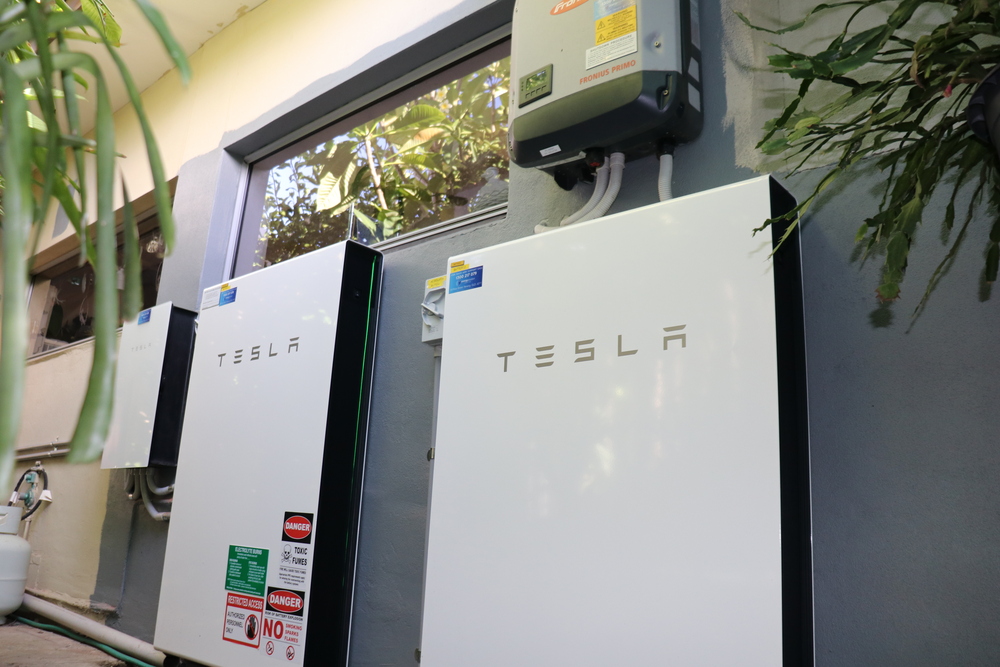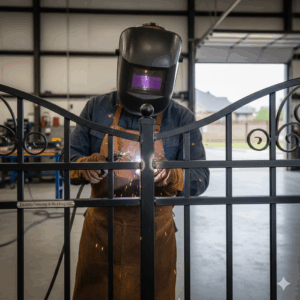The rapid urbanization of the 21st century has led to a pressing need for more efficient, sustainable, and tech-driven urban solutions. Cities across the globe are evolving into “smart cities,” where data and technology are at the core of managing urban life. In this transformation, AI app development services have become an essential force, driving smarter traffic management, energy efficiency, public safety, environmental monitoring, and strategic urban planning.
The rise of artificial intelligence (AI) in these applications allows cities to be not only more efficient but also more responsive to the needs of residents, offering an improved quality of life. This shift is reshaping how cities operate, empowering urban planners to make data-driven decisions that meet the demands of the future.
What Defines a Smart City?
A smart city leverages advanced digital technologies to optimize resources, enhance public services, and promote sustainable urban growth. This includes the deployment of the Internet of Things (IoT), AI-powered apps, and real-time data analytics to improve the lives of citizens. Smart cities aim to create an environment where the infrastructure and services—such as energy, transportation, water supply, and waste management—work together seamlessly, allowing for more efficient urban living.
In this landscape, AI applications help by analyzing vast amounts of data and providing actionable insights. Whether it’s forecasting traffic patterns or predicting energy demand, AI ensures that city resources are used in the best possible way.
How AI App Development Services Drive the Future of Smart Cities
AI app development services are central to realizing the full potential of smart cities. By leveraging machine learning, predictive analytics, and intelligent automation, AI applications enable cities to not only optimize their daily operations but also prepare for future growth. Let’s delve deeper into how AI is transforming various aspects of urban life.
1. AI-Powered Traffic Management: Streamlining Urban Mobility
Traffic congestion is one of the most common challenges in urban areas. Traditional traffic management systems often rely on pre-programmed signals or human intervention, which can’t always adapt quickly to changing conditions. AI-driven traffic management systems solve this problem by dynamically analyzing real-time traffic data collected from sensors, cameras, and GPS systems.
AI algorithms predict congestion, optimize traffic light timings, and suggest alternative routes, enabling smoother traffic flow. These smart systems also help with emergency vehicle routing, ensuring that first responders can reach their destinations faster. Moreover, by reducing congestion, AI-powered solutions contribute to lower fuel consumption and reduced greenhouse gas emissions, making cities not only more efficient but also more environmentally friendly.
2. Smart Energy Management: Optimizing Resource Efficiency
As the world shifts toward sustainable energy solutions, AI app development is playing a crucial role in smart energy management. In a smart city, energy systems are integrated with AI to monitor consumption, optimize distribution, and reduce wastage. AI-powered applications can analyze historical data to predict energy needs in real time, ensuring that cities balance supply and demand more effectively.
Smart energy management goes beyond electricity. AI is also being used to optimize water usage, manage heating and cooling systems, and even integrate renewable energy sources like solar and wind into the urban grid. By predicting future consumption patterns and managing resources accordingly, AI apps ensure that cities remain energy-efficient and environmentally responsible.
3. Public Safety and Predictive Surveillance: Enhancing Security
AI-powered surveillance systems are revolutionizing public safety in smart cities. Traditional security systems rely heavily on manual monitoring, which can be inefficient and prone to human error. In contrast, AI-based systems offer real-time facial recognition, behavior analysis, and anomaly detection, ensuring proactive measures can be taken to prevent crimes before they happen.
AI-driven cameras and sensors strategically placed around a city can analyze data in real time, identifying suspicious activities or individuals who pose a potential threat. These systems can alert authorities instantly, enabling faster response times and potentially saving lives. Additionally, AI apps can provide predictive analytics, highlighting crime hotspots and suggesting where to allocate resources more efficiently.
4. Smart Waste Management: Keeping Cities Clean
Effective waste management is essential for any growing city. Generative AI development services have enabled smart cities to streamline their waste management processes by predicting when waste bins are full, optimizing collection routes, and reducing overall operational costs.
For instance, AI-based systems use sensors to monitor the capacity of waste bins across the city. These sensors notify collection services when a bin needs emptying, reducing unnecessary trips and saving fuel. Additionally, AI algorithms can optimize collection routes based on real-time traffic data, ensuring that garbage trucks take the most efficient path possible.
5. Urban Planning with AI: Designing Future-Proof Cities
Urban planning has long relied on traditional methods, but AI is revolutionizing how cities are designed and developed. Through the use of AI-driven simulations and predictive models, urban planners can analyze a wide range of data—from population growth and traffic flow to environmental factors and economic trends. This data-driven approach enables planners to design cities that are more efficient, resilient, and sustainable.
AI helps predict future scenarios, such as the impact of population growth on housing, infrastructure, and transportation. By running simulations, planners can create solutions that account for potential challenges before they arise, ensuring that cities are prepared for future demands. Additionally, AI-powered apps can identify underutilized spaces in a city, suggesting ways to optimize land use and create more livable environments.
6. Citizen Engagement: Making Urban Living More Responsive
AI apps are also transforming the way city governments engage with residents. With the help of AI-powered chatbots and automated platforms, citizens can now report issues, request services, and provide feedback in real time, making governance more efficient and responsive. These apps help reduce the workload on city officials and improve communication between the government and the public.
AI can also be used to analyze public sentiment by monitoring social media platforms and other digital communication channels. By understanding how residents feel about various city services and policies, authorities can make more informed decisions that reflect the true needs of the community.
7. AI in Environmental Monitoring: Protecting Natural Resources
In an era of increasing environmental awareness, AI app development services are proving vital for environmental monitoring and sustainability in smart cities. AI-powered sensors collect data on air quality, noise levels, and water pollution, providing city planners with real-time insights into the environmental health of urban areas.
By analyzing this data, AI applications can alert authorities to environmental hazards, such as rising pollution levels or unsafe drinking water. These alerts allow cities to take immediate action to mitigate damage and protect public health. Additionally, AI-powered apps can provide long-term predictions about environmental trends, helping cities plan for a more sustainable future.
8. Predictive Maintenance: Preventing Infrastructure Failures
A smart city requires well-maintained infrastructure, and AI plays a key role in ensuring that urban infrastructure remains in top condition. Predictive maintenance systems powered by AI collect data from sensors embedded in roads, bridges, buildings, and other critical infrastructure. This data allows AI algorithms to predict when maintenance will be needed, preventing unexpected failures.
By using AI for predictive maintenance, cities can reduce repair costs and prevent infrastructure-related accidents. This approach not only improves public safety but also extends the lifespan of city infrastructure, ensuring that investments in roads, bridges, and public buildings pay off over the long term.
9. Smart Water Management: Ensuring Sustainable Water Usage
Water is a precious resource in urban areas, and AI-powered water management systems are helping cities use it more efficiently. AI applications analyze data on water consumption patterns, detect leaks, and optimize distribution networks, ensuring that cities can provide reliable water services while minimizing waste.
AI can also predict future water demands based on population growth and seasonal variations, enabling city planners to allocate resources more effectively. By identifying potential issues before they escalate, AI helps ensure that cities maintain a consistent water supply and meet the needs of their residents.
10. Healthcare Innovations: Enhancing Public Health Services
In smart cities, AI is not just limited to infrastructure and urban planning; it also plays a significant role in enhancing public health services. AI applications can analyze health data to identify trends, monitor outbreaks, and improve service delivery within urban healthcare systems.
For example, AI-powered tools can help city health departments track disease outbreaks by analyzing data from hospitals, clinics, and public health reports. This allows for timely interventions and resource allocation to combat health crises effectively. Additionally, AI can streamline patient care by optimizing scheduling and improving patient triage processes, ensuring that citizens receive timely and appropriate medical attention.
Conclusion: The Path Ahead for Smart Cities
The integration of AI app development services into urban planning and management is not merely a trend; it is a transformative shift that is shaping the future of smart cities. By harnessing the power of AI, cities can optimize resources, enhance public services, and create sustainable environments that improve the quality of life for all residents.
As we look toward the future, the collaboration between city planners, technology developers, and citizens will be crucial in realizing the full potential of smart cities. By embracing AI and other innovative technologies, urban areas can evolve into responsive, efficient, and resilient environments that meet the challenges of modern life.
FAQs
- What are smart cities?
Smart cities are urban areas that utilize digital technologies and data analytics to enhance city services, improve resource management, and create a better quality of life for residents. - How does AI improve traffic management in smart cities?
AI improves traffic management by analyzing real-time data to optimize traffic light timings, predict congestion, and suggest alternative routes, leading to smoother traffic flow. - What role does AI play in waste management?
AI enhances waste management by using sensors to monitor bin capacity, optimizing collection routes, and improving sorting processes at recycling facilities. - How can AI contribute to public safety in urban areas?
AI contributes to public safety through real-time surveillance, predictive analytics to identify potential threats, and efficient communication with emergency services. - What is predictive maintenance, and why is it important?
Predictive maintenance uses AI to monitor infrastructure health and predict when maintenance is needed, preventing failures and ensuring public safety. - How does AI help in healthcare services within smart cities?
AI enhances healthcare services by analyzing health data to track outbreaks, optimize patient care, and provide telehealth options, making healthcare more accessible.








